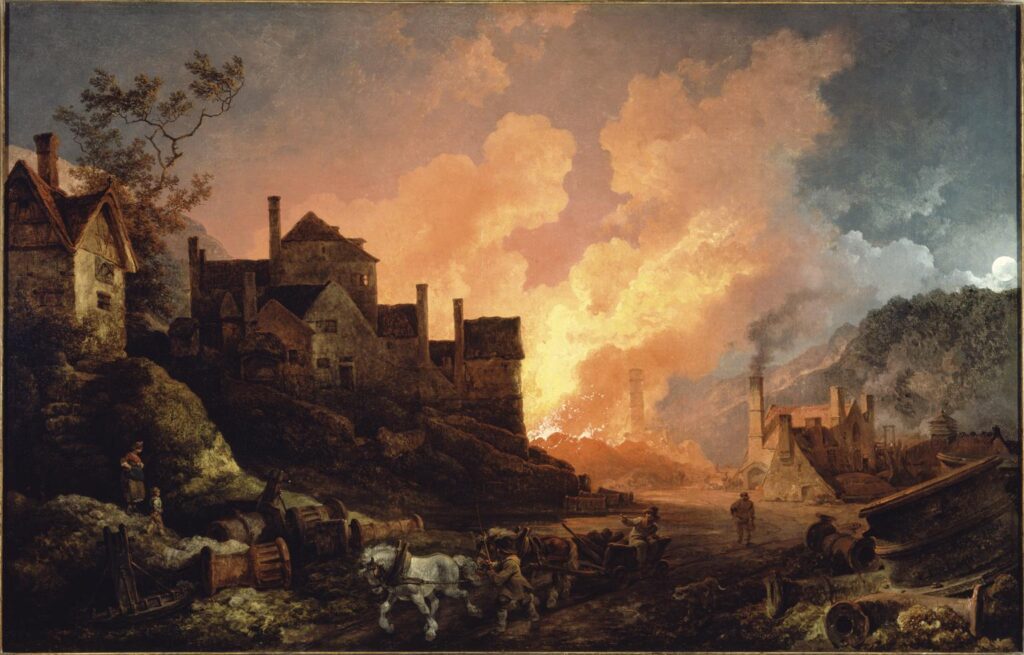Unveiling the Connection Between Art, Science, and Nature
Exploring the intricate relationship between art, science, and nature invites an enriching journey through creativity and discovery. A self-guided trail through a renowned Science Museum reveals how these disciplines intertwine, presenting artworks and stories that highlight their deep connections.
Stop 1: Mathematical Order in Nature’s Design
The trail begins at a gallery dedicated to mathematics, where a captivating piece titled “Print of Herrenhausen Gardens” invites visitors to reflect on the harmony between geometry and the natural environment. These 17th and 18th-century gardens in Hannover, Germany, were designed with precise lines of symmetry and geometric shapes, symbolizing both scientific mastery and the human desire to shape nature.
As an example of early Baroque gardens, the layout incorporates circular fountains as focal points and strict sight lines, demonstrating how mathematical concepts such as symmetry inform natural beauty and design.
Stop 2: Medicine and Community in a Pandemic
Moving on to the Medicine galleries, visitors encounter a ceramic vase named “Alan Measles – God in the Time of Covid-19” by artist Grayson Perry. This artwork channels the emotional and social impact of the Covid-19 pandemic in 2020, featuring symbolic figures such as healthcare workers in PPE and protesters, alongside imagery of urban and rural contrasts.
The depiction underscores the crucial role of green spaces in mental health during lockdown periods, showing how access to nature supports psychological resilience against stress and anxiety. It also highlights global efforts toward urban greening to extend the benefits of natural environments to more communities.
Industrial Revolution Captured Through Art
On the ground floor, a powerful painting titled “Coalbrookdale by Night” portrays the industrial furnaces that transformed raw materials into vital products during the 19th century. The flames and smoke symbolize the intense relationship between nature and industrial progress, reflecting early concerns about environmental impact.
This piece serves as a historical pivot, reminding us that sustainable energy solutions to protect natural biodiversity remain a critical scientific focus today.
Observing Clouds and the Birth of Meteorology
Next, two watercolours of cloud formations by Luke Howard and Edward Kennion illustrate the foundational role that detailed observation of nature has played in advancing science. Howard’s cloud studies laid the groundwork for modern meteorology, providing categories like “Nimbus” and “Cumulostratus” that are still used in weather science.
These paintings demonstrate how artistic skill complements scientific inquiry, and how citizen science projects continue to involve public participation in climate research through cloud observation.
Table 1: Key Educational Stops on the Trail
| Stop | Theme | Highlight | Significance |
|---|---|---|---|
| 1 | Mathematics | Print of Herrenhausen Gardens | Geometric order in nature and garden design |
| 2 | Medicine | Alan Measles Vase by Grayson Perry | Emotional response to Covid-19, urban green spaces |
| 3 | Industrial Art | Coalbrookdale by Night Painting | Industrial Revolution’s effect on nature |
| 4 | Meteorology | Cloud Studies by Howard and Kennion | Early scientific cloud classification |
Future of Food: Artistic Science Meets Agriculture
The trail concludes in a special exhibition called The Future of Food, requiring a ticket. Here, art and science converge in a sculpture based on the microscopic structure of wheat leaves. Created by Jodie Armand, this hand-knitted stainless-steel wire artwork magnifies the tiny pores called stomata that regulate water and gas exchange in plants.
This representation reveals how advanced scientific methods, including 3D imaging, aid research aimed at developing crops more resilient to drought and climate change, essential for sustainable agriculture worldwide.
Historical Perspective: Museums as Bridges Between Art, Science, and Nature
Museums have long served as vital institutions preserving the history of humanity’s relationship with the natural world and scientific progress. Originating from collections of curiosities during the Renaissance and Enlightenment, today’s museums blend educational, artistic, and scientific narratives under one roof.
Science museums, in particular, have evolved from simple collections to interactive spaces that engage visitors through models, artworks, and experiments, fostering greater public understanding of complex subjects.
This evolution reflects a broader cultural appreciation for the interconnectedness of disciplines, an approach that has facilitated enhanced awareness of how we impact the environment and how we might preserve it.
Forecasting the Role of Art-Science Exhibits in Global Tourism
As international travelers increasingly seek experiences that combine education, culture, and recreation, museums offering interactive and visually compelling journeys into the convergence of art, science, and nature are well-positioned to attract diverse audiences.
Incorporating such themes into tourism could inspire community projects emphasizing environmental stewardship and sustainable development, further strengthening travel destinations related to natural settings like beaches, lakes, and coastal regions.
Benefits of Combining Art, Science, and Nature Themes in Tourism
- Encourages environmentally conscious travel behaviors.
- Enhances visitor engagement through immersive learning.
- Supports local economies through educational tourism.
- Fosters cultural appreciation linked to natural landscapes.
Conclusion: The Continuing Voyage of Art, Science, and Nature
The trail reveals how human creativity and empirical inquiry jointly explore and interpret the natural world—from mathematically designed gardens to cloud classifications, to art that captures both industrial and pandemic realities. These narratives enhance understanding of our environment’s complexities and our role within it.
For those drawn to destinations where the sea, lakes, and marinas invite sailing and boating, such perspectives deepen the appreciation of nature’s beauty and the science that sustains it. The experience encourages a mindful approach to boating and yachting along coasts and gulfs, where the balance of human activity and natural environments is vital.
Discovering the connections between art, science, and nature can enrich every journey, whether on land or water. For enthusiasts of yachting, chartering boats, and exploring pristine beach and ocean destinations, services like GetBoat.com offer an exceptional way to combine exploration with respect for nature’s wonders. This international marketplace provides access to a diverse selection of sailing yachts and boats, catering to all tastes and budgets, supporting active engagement with the sea and its many adventures.


